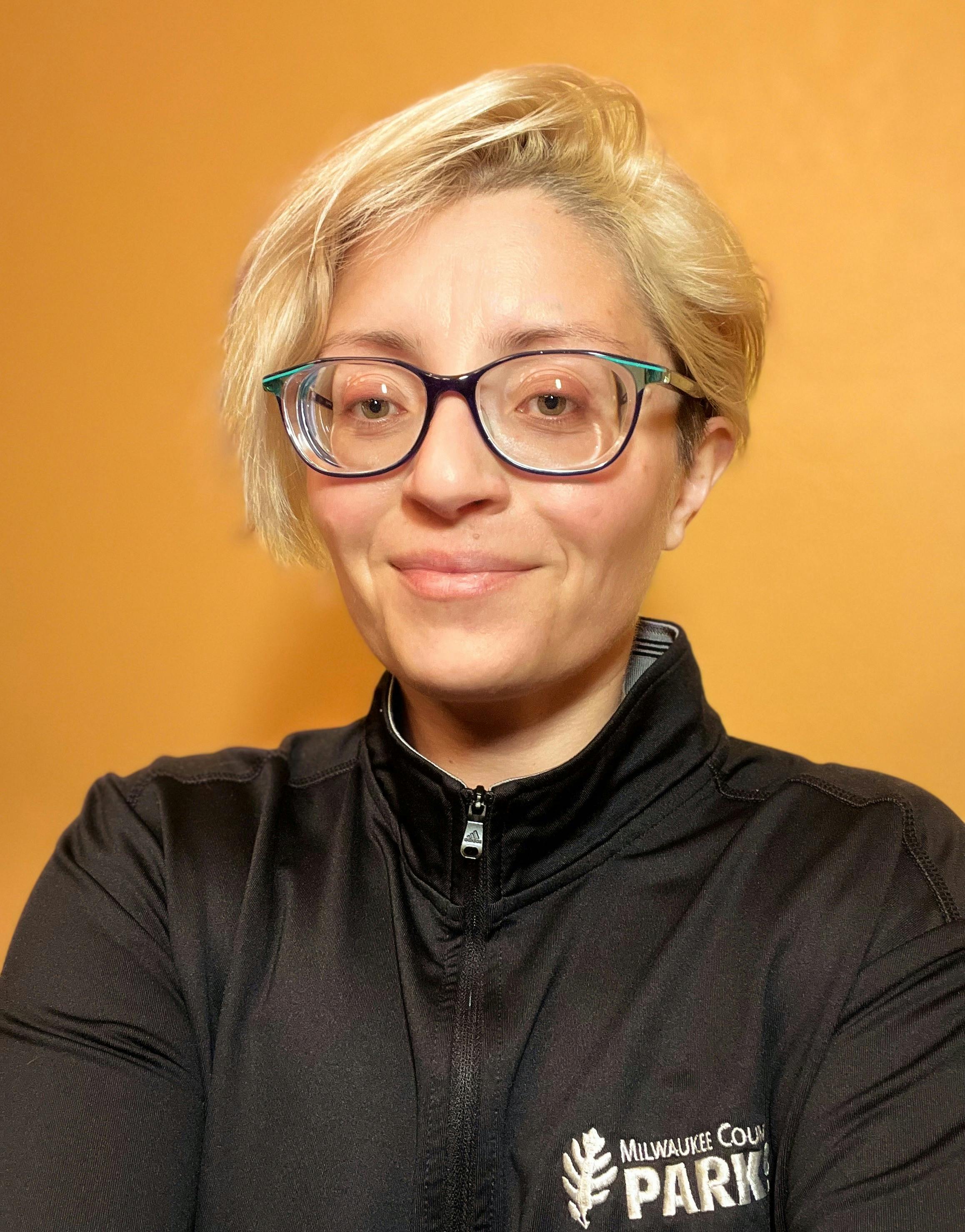Parks and the Milwaukee River Cleanup
This is a Milwaukee Estuary Area of Concern (AOC) Project. Please visit the Parks and the AOC and the Waterway Restoration Partnership (WRP) for more information on this amazing, multi-partner effort to cleanup waterways and restore habitat across the County.
Updates
The Final Focused Feasibility Study Report for the Milwaukee River Floodplains Reach is now available! It is linked here and at the Waterway Restoration Partnership website.
Posters from the previous Open House events (11/2/23, 2/15/24, 4/25/24, 6/13/2024) as well as the Draft Focused Feasibility Study and a recording of the presentation can be found here: Milwaukee River Floodplains.
Project Background & Overview
 | Have you heard? It's kind of a big deal: we are cleaning up the Milwaukee River! The culmination of a decades long effort, supported by over 20 partners, this project is part of the largest cleanup project to ever be implemented under the Great Lakes Restoration Initiative and the Great Lakes Legacy Act. Led by the U.S. Environmental Protection Agency (EPA), this cleanup will take place in and along many Milwaukee County Parks. While there is no doubt that County residents will benefit from the end result, which includes safer, healthier waterways and improved connections to unique natural areas, this work will not come without changes and temporary disruptions. This is a challenging endeavor, one which requires coordination between EPA, the County, DNR, and local municipalities, as well as the critical input and support of community partners. The Milwaukee River Floodplains Cleanup Project spans 3.5-miles between the former Estabrook Dam and former North Avenue Dam. The site is home to a large portion of the Milwaukee River Greenway and 7 parks managed by Milwaukee County, Urban Ecology Center, and River Revitalization Foundation. This is a cherished stretch of green space and trails, cared for by a network of partners organizations and communities. However, remnants of our industrial past have impacted the health of rivers and riverside habitat, preventing us from fully and safely being able to enjoy these areas. |

From 2016-2020 and 2021, soil samples were taken throughout the floodplains, revealing the presence of contaminants: Polychlorinated biphenyls (PCBs), polycyclic aromatic hydrocarbons (PAHs), lead and arsenic. PCBs are our largest concern due to both the high concentrations found and its ability to bioaccumulate in fish. This means that contaminants can build up overtime in the fish's bodies, leading to the fish consumption advisories, which restrict which fish and how many fish we can eat from the Milwaukee River.
On January 28th, 2020, project partners, including EPA, Milwaukee Metropolitan Sewerage District (MMSD), City of Milwaukee, Wisconsin Department of Natural Resources (DNR), and Milwaukee County signed the Great Lakes Legacy Act Project Agreement (GLLA) for the Milwaukee River Downstream. This began the work of addressing legacy contaminants in waterways throughout multiple waterways in the AOC. The goal of the Milwaukee River Floodplains Cleanup project is exactly that - to clean up contaminated sediment and soil from the floodplains.
The river cleanup is being led by EPA, but you may have also heard about Milwaukee River Greenway Habitat Restoration Project. This is separate effort led by Milwaukee County Parks focused specifically on restoration and enhancements for wildlife - it will be complementary to the sediment cleanup but requires regular coordination and planning between Parks, EPA, and DNR.
Selecting a Path Forward
Over the past 3 years, EPA has been sampling sediment in the Milwaukee River, assessing conditions, and developing a report or Focused Feasibility Study (FFS) that evaluates ways to address sediment contamination. This report considers the financial, legal, ecological, human health, and technical aspects of the project and studies the effectiveness of different proposed clean-up actions. A Draft FFS was completed in 2023 with recommended alternatives, which are different ways and methods of achieving our project goal – floodplain sediment cleanup.
These included:
Alternative 1: No action
Alternative 2: Full excavation and removal of contaminated sediment to be replaced by clean fill, followed by re-vegetation/restoration.
Alternative 3a/3b: Full excavation only in priority areas; combined with precision excavation using smaller equipment in areas of high-quality habitat; under this alternative some contamination would be left in place with existing vegetative cover.
Alternative 4: Elements of Alternative 3a/3b along with an additional action of soil cover for contamination left in place.
Parks’ AOC, Planning, Operations, and Natural Areas teams, as well as the County Architecture, Engineering & Environmental Services Section reviewed the alternatives, along with project partners including Urban Ecology Center, River Revitalization Foundation, and DNR. Together it was determined that the best path forward is a combination of Alternatives. It is recommended that the majority of the corridor be managed as Alternative 2 with the potential for some precision excavation (Alternative 3a). Precision excavation will allow us to maintain some native seed trees which will aid in the re-naturalization of the floodplain areas after contamination removal is complete. The Milwaukee River Greenway is a very popular, highly used system and our primary concern is public health. Removing as much contamination as possible is the first goal.
Removed sediment will be trucked to the Dredged Material Management Facility (DMMF) or piped in secured pipes down the river. The DMMF will safely store and cap the contaminated sediment. Once the sediment is removed, EPA will begin to restore the floodplains with native species to create a unique and safe place to recreate.
When and Where is Work Happening?
 Example of a conceptual design for post-cleanup restoration near Kern & Pleasant Valley Parks
Example of a conceptual design for post-cleanup restoration near Kern & Pleasant Valley ParksOn-the-ground work is not expected to start until 2027. EPA is continuing the planning and performance of the Pre-Design Investigation and will begin to work on the Remedial Design beginning in 2024.
Project Timeline (subject to change):
- 2020-2023: Focused Feasibility Study
- 2021-2025: Pre-Design
- 2024-2026: Remedial Design
- 2027-2030: Remedial Action and Restoration
What to Expect for People, Fish, and Wildlife
First, and most importantly, Wisconsin Department of Health Services (DHS) expects no one to get sick from floodplain contaminates based on the way people are currently using them. But what does that mean? If you are using park sites as intended (example: biking and hiking on designated trails) and not engaging in activities prohibited by County Ordinance (example: foraging or digging), there is no expected risk. The primary way people can be affected by contamination is by eating fish caught in this stretch of the river. DHS recommends that everyone follow fish consumption guidelines and soil safety best practices as outlined in the signs posted around the Greenway. Check out the Documents section for full size versions our updated Soil Safey and Fish Consumption signs.

Significant portions of the floodplains cleanup project will be taking place on Milwaukee County land and impacting multiple parks. While we have not yet reached the design phase or determined how cleanup activities will be undertaken, we know that work needed to cleanup our river will result in changes to our Parks. Impacts, while temporary, may be jarring and upsetting for the community. We love the Greenway – hiking along trails, fishing in the river, and enjoying the oasis of open space in the heart of the city are what make this area one of the most beloved in the County. Some of these areas may not be accessible, trails diverted, and certain recreational activities impacted or halted during work.
Other impacts could include but are not limited to:
- Temporary trail and recreational amenity closures,
- Heavy machinery and landscape equipment,
- Herbicide and forestry tools,
- Invasive species removal,
- Tree removal,
- Revegetation activities,
- Loud noises,
- Temporary impacts to visual aesthetics.
Be mindful of any signs and notices that may be placed onsite and/or online for everyone’s safety. More details at AOC FAQ (coming soon).
As we continue working with EPA and the partner team on a path forward, we still need your voice. Be sure to share your concerns, comments, and ideas regarding the proposed cleanup activities to the EPA project team at the Milwaukee River Floodplains WRP page. You can also scroll through our "Who's Listening" section for EPA contact information.
Project Benefits
There are so many benefits to come from the Milwaukee River Floodplain sediment cleanup project! The biggest “win” from this project is that our waterways are going to be healthier AND the floodplains safer to adventure in.
Following restoration work, more scenic native habitat will be established for all to enjoy when using the trails. With adding more native species to the floodplains, this will provide critical habitat for our native fish and wildlife friends, you may even be able to spot one of those cheeky River Otters!
Not only will this project help to enhance native biodiversity and outdoor recreation for the community, but it is also a necessary action to help delist the Milwaukee Estuary AOC. “De-listing” involves implementing projects that will address issues which have prevented humans, fish, and wildlife from being able to fully and safely use our natural resources.
How can I get involved & where can I learn more?
We are thrilled you want to get involved with the Milwaukee Estuary AOC and the Milwaukee River Floodplain cleanup project. Stay involved - learn more about this and other AOC projects by attending meetings, signing up for the Waterway Restoration Partnership Newsletter, and contributing feedback to the EPA Team. Due to the large size and the longevity of this project, community input is valuable to the success of the project. We encourage you to comment and engage online and at events.
There will be opportunities along the way that involve onsite such as,
- Stewardship work,
- Species monitoring,
- Working with Friend’s Groups and local non-profits along the floodplains to provide long term maintenance once the project is completed.
And don't forget, you can find a Friend’s Group or start your own at ParkPeopleMKE!



















